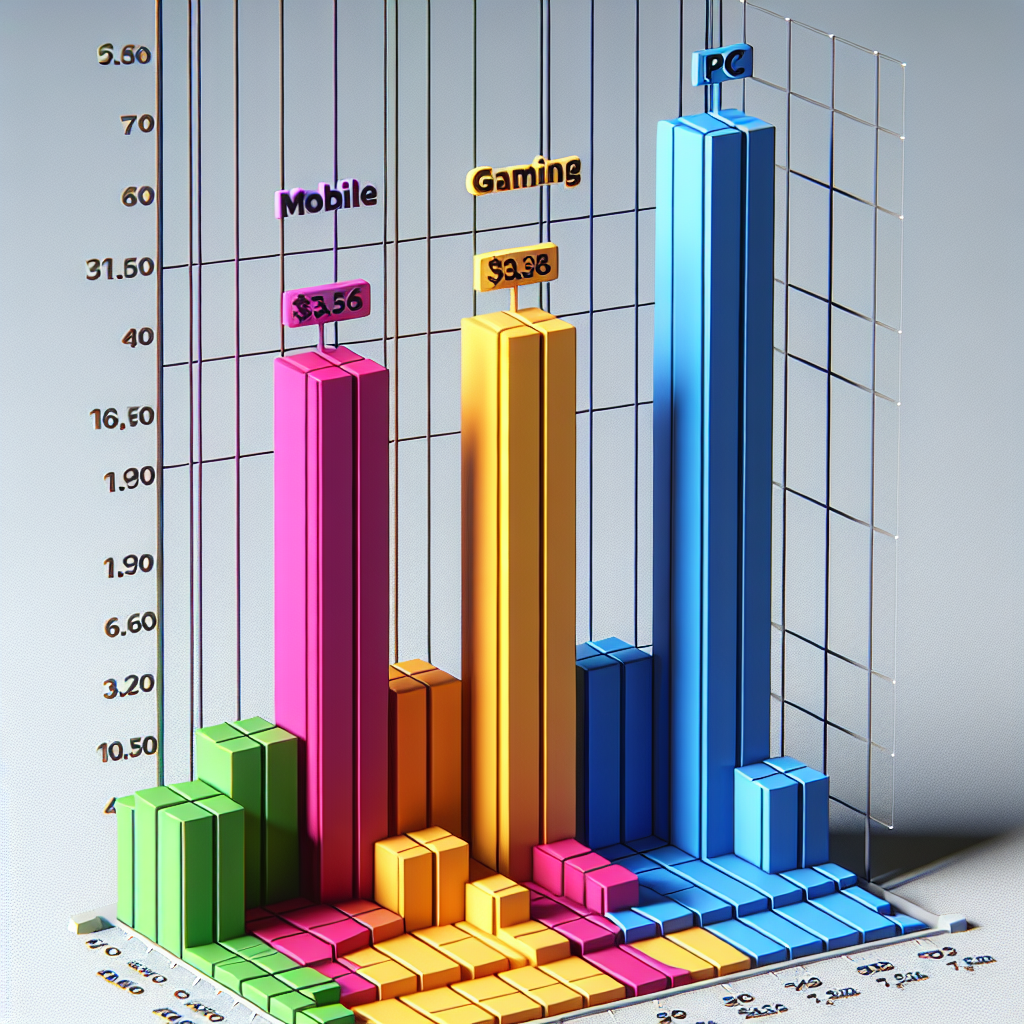Mobile Gaming’s $116 Billion Dominance
The mobile gaming industry’s meteoric rise to a projected $116 billion valuation by 2025 represents more than just a market trend—it’s a fundamental reimagining of what gaming means in the 21st century. With over 700,000 gaming titles available across iOS and Android platforms, smartphones have evolved from simple communication devices into the world’s most ubiquitous gaming platforms, reaching audiences that traditional gaming could never touch1.
The Economics of Mobile Gaming Supremacy
The financial dynamics driving mobile gaming’s dominance are multifaceted and compelling. Unlike console or PC gaming, which require substantial upfront hardware investments ranging from $300 to $2000, mobile gaming leverages devices that consumers already own for other purposes. This zero-additional-cost entry point has expanded the total addressable market to virtually every smartphone owner globally—a population exceeding 6.8 billion people.
The revenue models in mobile gaming have proven remarkably resilient and scalable. Free-to-play games with optional in-app purchases have generated more revenue than premium-priced titles, with games like Genshin Impact earning over $3 billion in their first two years. This model allows developers to cast a wide net, acquiring millions of users for free while monetizing through cosmetic items, battle passes, and gameplay advantages.
Advertising revenue adds another lucrative layer to the mobile gaming economy. Rewarded video ads, where players voluntarily watch advertisements in exchange for in-game benefits, have achieved click-through rates exceeding 15%, far surpassing traditional digital advertising metrics. This symbiotic relationship between advertisers and players has created a sustainable ecosystem where free games can remain profitable while providing value to non-paying users.
Technological Advancement and Gaming Capability
Modern smartphones possess computing power that rivals dedicated gaming devices from just a few years ago. The latest flagship processors like Apple’s A17 Pro and Qualcomm’s Snapdragon 8 Gen 3 deliver performance comparable to last-generation gaming consoles. These chips incorporate dedicated ray-tracing hardware, neural processing units for AI-enhanced gaming, and sophisticated thermal management systems.
Display technology has evolved specifically to enhance mobile gaming experiences. High refresh rate screens operating at 120Hz or even 165Hz provide smooth, responsive gameplay that was previously exclusive to gaming monitors. OLED and AMOLED panels deliver vibrant colors and true blacks, making games visually stunning even on compact screens. Adaptive refresh rates optimize battery life by dynamically adjusting frame rates based on content, allowing for extended gaming sessions.
Touch input technology has become increasingly sophisticated, with multi-touch recognition supporting up to ten simultaneous inputs, pressure sensitivity adding depth to controls, and haptic feedback providing tactile responses that enhance immersion. Some manufacturers have introduced ultrasonic shoulder buttons and pressure-sensitive edges, transforming phones into more capable gaming devices without compromising their primary functionality.
The Casual Gaming Revolution
Mobile platforms have fundamentally redefined who qualifies as a “gamer.” The accessibility of mobile games has attracted demographics traditionally underserved by gaming, including older adults, busy professionals, and predominantly female audiences who now represent 51% of mobile gamers. This demographic expansion has driven the creation of entirely new genres and gameplay styles.
Hyper-casual games, characterized by simple mechanics and instant playability, have become a phenomenon unique to mobile platforms. Titles focusing on satisfying mechanics, like Solitaire or Snake Game, continue to attract millions of daily players despite their simplicity2. These games serve as gateway experiences, introducing non-gamers to interactive entertainment and gradually building comfort with more complex titles.
The evolution toward hybrid-casual games represents the maturing of mobile gaming audiences. These titles combine the accessibility of casual games with deeper progression systems and meta-games that encourage long-term engagement. Match-three games have evolved to include narrative elements, character collection, and base-building mechanics, creating experiences that can engage players for months or years.
Geographic and Cultural Impact
Asia-Pacific’s dominance in mobile gaming, representing 41% of global revenue, reflects both cultural preferences and infrastructure realities. In countries like China, Japan, and South Korea, mobile gaming isn’t seen as a lesser form of gaming but as the primary platform for interactive entertainment. High-speed mobile internet, ubiquitous smartphone adoption, and commute-heavy urban lifestyles have created perfect conditions for mobile gaming to flourish.
The cultural impact extends beyond mere entertainment consumption. Mobile gaming has become a social activity, with games like PUBG Mobile and Free Fire serving as virtual meeting spaces for friends2. In many developing nations, mobile gaming represents young people’s first exposure to online multiplayer experiences, fostering digital literacy and global connectivity.
Localization strategies have become increasingly sophisticated, with developers creating region-specific content, events, and even entirely different game versions for different markets. This cultural sensitivity has enabled games to resonate deeply with local audiences while maintaining global appeal. The success of games like Garena Free Fire in Latin America and Southeast Asia demonstrates the importance of understanding and catering to regional preferences.
The Competitive Mobile Gaming Ecosystem
Mobile esports has emerged as a legitimate competitive platform, with tournaments offering prize pools exceeding $15 million. Games like PUBG Mobile, Mobile Legends, and Call of Duty Mobile have established professional leagues with corporate sponsorships, broadcast deals, and dedicated training facilities. The accessibility of mobile devices has democratized competitive gaming, allowing players from economically disadvantaged backgrounds to compete at the highest levels2.
The infrastructure supporting mobile esports has matured rapidly. Specialized gaming phones with enhanced cooling systems, higher refresh rates, and gaming-specific features cater to competitive players. Streaming platforms have optimized their services for mobile broadcasting, enabling players to stream directly from their devices without additional hardware. This has created a new generation of content creators who build audiences entirely through mobile gaming content.
Monetization Innovation and Player Psychology
Mobile gaming has pioneered monetization strategies that balance profitability with player satisfaction. The battle pass model, popularized by Fortnite and now ubiquitous across mobile games, provides predictable revenue streams while giving players clear value propositions2. Seasonal content updates keep games fresh and encourage regular spending without feeling exploitative.
Gacha mechanics, originating from Japanese mobile games, have evolved into sophisticated systems that blend collection, gambling-like excitement, and guaranteed progression. While controversial, these systems have proven incredibly effective at generating revenue when implemented ethically. Games like Genshin Impact have demonstrated that gacha systems can coexist with high-quality gameplay and generous free-to-play experiences.
Social features have become integral to monetization strategies. Clan systems, guild wars, and cooperative events create social pressure and incentives for spending. Players invest not just for personal advancement but to contribute to their communities. This social element significantly increases player lifetime value and reduces churn rates.
Technical Innovation and Platform Evolution
Cross-platform play has become increasingly important for mobile games, with titles like Fortnite and Minecraft allowing mobile players to compete with console and PC users2. This technical achievement required significant optimization to ensure mobile devices could maintain competitive frame rates and respond quickly enough to compete fairly. The success of cross-platform play has validated mobile gaming as a legitimate platform worthy of inclusion in the broader gaming ecosystem.
Cloud streaming integration represents the next frontier for mobile gaming. As 5G networks proliferate, mobile devices will increasingly serve as thin clients for cloud-rendered games, enabling console-quality experiences without local processing limitations. This hybrid approach will blur the lines between mobile and traditional gaming, creating a unified gaming ecosystem accessible from any device.
Machine learning and AI integration have enhanced mobile gaming experiences in ways unique to the platform. Personalized difficulty adjustment, predictive loading of assets based on player behavior, and automated testing using AI players have improved game quality and player retention. The vast amount of data generated by millions of mobile gamers provides unprecedented insights for optimizing game design and monetization.





